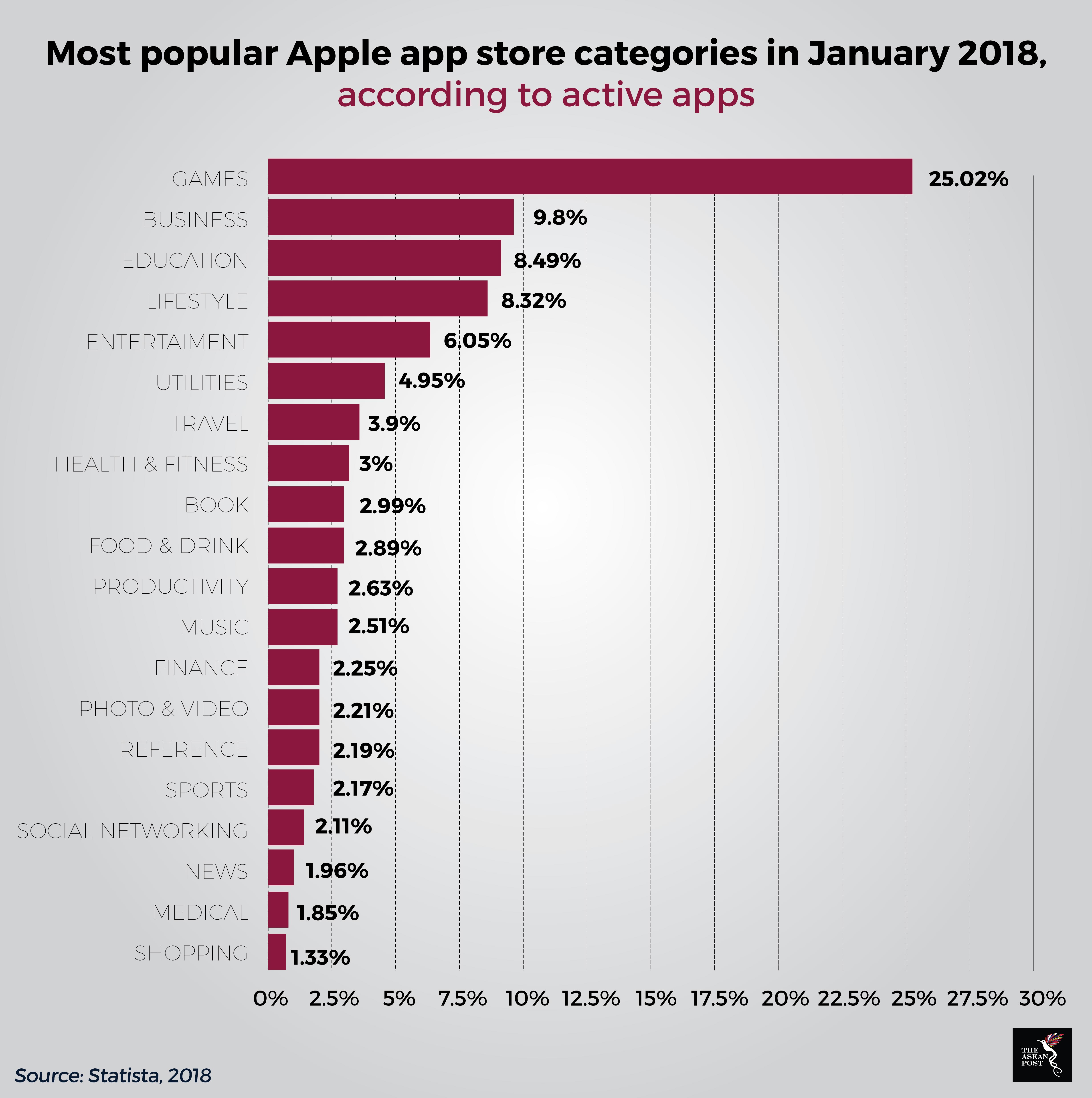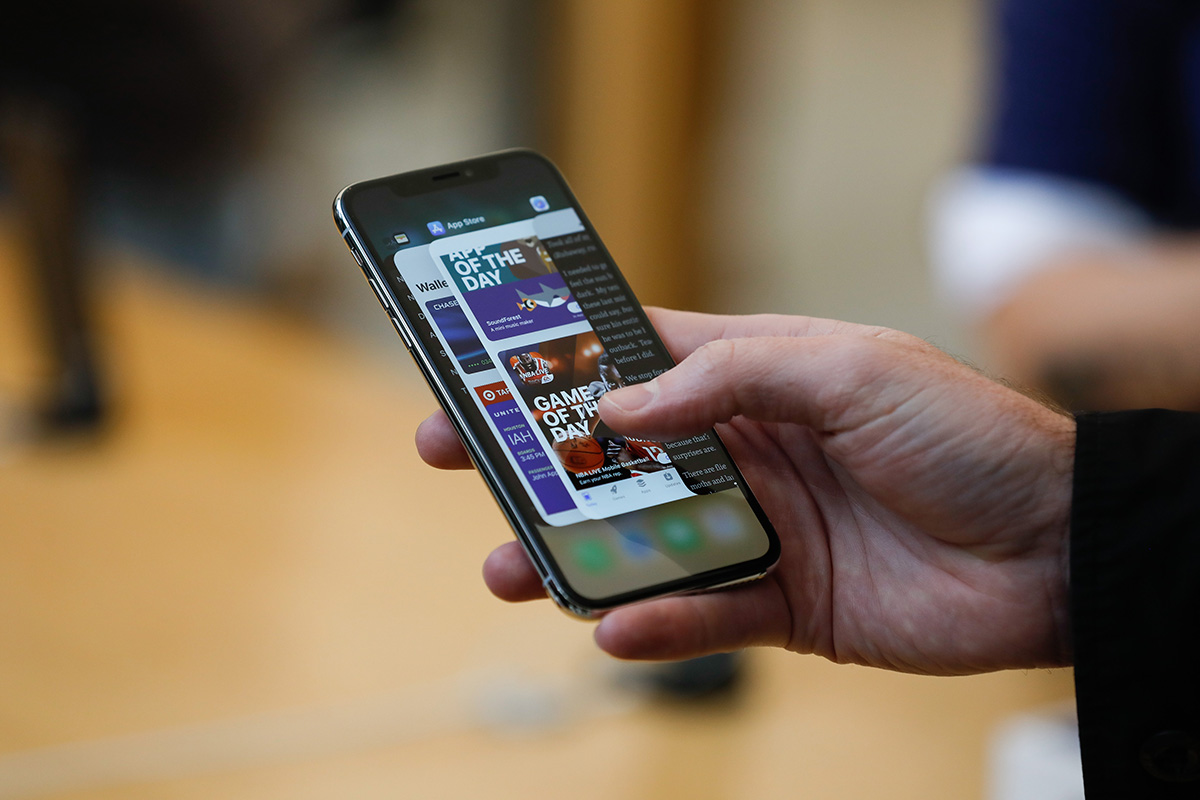The potential for the app market is huge in Southeast Asia, where smartphone usage accounts for more than 90% of overall internet use in the region, according to a 2017 joint report produced by Google and Temasek Holdings.
Apps are generally divided according to the functions provided, be it for shopping, gaming or business, and the operating system on which they run. Research which surveyed the determinants of smartphone app success has shown that some of the factors influencing the popularity of apps include the availability of high-user review scores to recommend the app, consistent updates and bug fixes to keep the app experience relevant and whether or not an app is competing in a high-density category, such as gaming.
“A key implication of the results of this study is that sellers must utilise the natural segmentation in consumer tastes offered by the different categories to improve sales performance,” reads the abstract in the report titled ‘Determinants of Mobile Apps’ Success: Evidence from the App Store Market’ published in the Journal of Management Information Systems in 2014. This point still rings true today with regards to the industry. In other words, apps must fulfil the purpose for which they were built in order to stay successful, regardless of app category.
Successful apps are fit for their purpose
One of the key features of popular apps is a smooth user interface. Some of the top apps on the Apple Store in 2017 simply fulfilled the function for which they were built. In Southeast Asia, the top free iPhone app in 2017 was Grab, which has been downloaded on 45 million devices across Southeast Asia, according to the company’s website. WhatsApp messenger came a close second, followed by Uber and YouTube, respectively.
Apple’s Human Interface Guidelines suggests clarity, deference and depth as key design themes for app designers to follow when building apps for the iOS platform. It also promotes user control as a key design element, defining this as the use of design to achieve a balance between enabling users to something and avoiding unwanted outcomes from occurring.
“An app can make people feel like they’re in control by keeping interactive elements familiar and predictable, confirming destructive actions, and making it easy to cancel operations, even when they’re already underway,” explains the guidelines, which are published on Apple’s website.
This is intuitive design, which in turn, stems from an app designer’s knowledge and understanding of their market base. In the international app market, one such example of an app that has an effective user interface is Evernote, which is a note-taking and organisational tool designed for both, personal and business use. The app’s simple user interface, replete with tagging and notebook stacking functions, helps keep its key functions in focus while additional features, such as a chat function allow it to be used as a productivity enhancer too. The app achieves much because it does not try to do more than what it was designed for.

A simple but effective user interface was also what Myanmar’s agriculture app, Green Way needed in order to reach a community of farmers who were otherwise wary of complex technology. It currently has 70,000 downloads because it successfully provides them with easily accessible updated weather forecasts, daily news and crop market prices, among other functions. The same can be said of the maymay app, a free maternal healthcare app with 30,000 active users. These users can consult doctors from remote locations and order medicine from reputable sellers with the app, according to data from the Global Innovation Exchange. The success of these apps, however, is due in part to their unique positioning. These apps help bridge existing market gaps within the agricultural and healthcare sectors in this region.
Apps also need to adapt to a user’s changing needs, which may happen at a rapid rate when there is more competition within an app category. Apps, after all are only as relevant as what their users need them to do, and switching between apps is an all too common practice among consumers. App developers could engineer loyalty by offering strong customer support through the supply of constant updates and bug fixes for their apps.
In short, an app is a product just like any other. Building a successful app for Southeast Asia often entails addressing a particular need effectively. What customers often want is an intuitive app design that works, followed by consistent app developer support when bugs interrupt the user experience. Users may seek new app experiences from time to time, but just as with any other product, they tend to come back to what previously worked for them.
